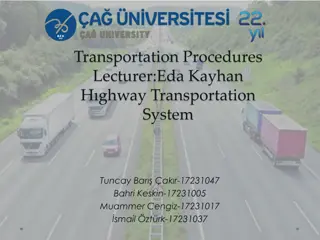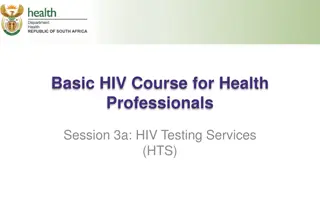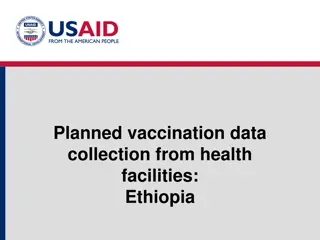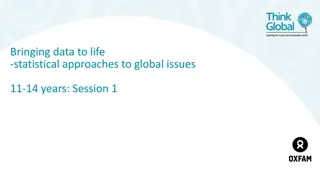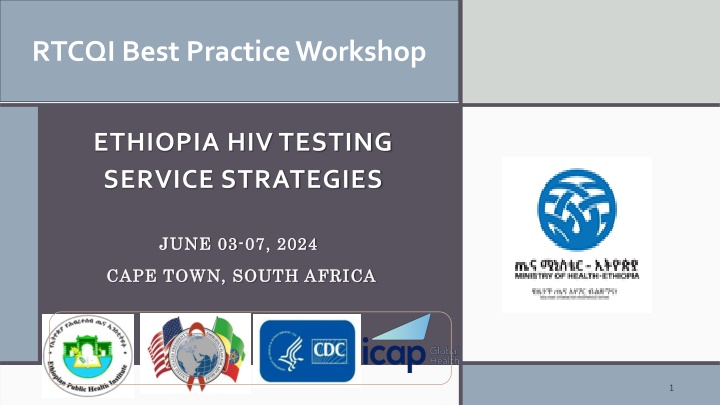
Evolution of HIV Testing Strategies in Ethiopia
Explore the evolution of HIV testing services in Ethiopia from 1980 to the present, tracing advancements in testing technologies and strategies. Learn about the development of testing algorithms, implementation of status verifications, and measures to ensure adherence to testing strategies in the fight against HIV/AIDS.
Download Presentation

Please find below an Image/Link to download the presentation.
The content on the website is provided AS IS for your information and personal use only. It may not be sold, licensed, or shared on other websites without obtaining consent from the author. If you encounter any issues during the download, it is possible that the publisher has removed the file from their server.
You are allowed to download the files provided on this website for personal or commercial use, subject to the condition that they are used lawfully. All files are the property of their respective owners.
The content on the website is provided AS IS for your information and personal use only. It may not be sold, licensed, or shared on other websites without obtaining consent from the author.
E N D
Presentation Transcript
RTCQI Best Practice Workshop ETHIOPIA HIV TESTING SERVICE STRATEGIES JUNE 03 JUNE 03- -07, 2024 07, 2024 CAPE TOWN, SOUTH AFRICA CAPE TOWN, SOUTH AFRICA 1
Outline Background Overview of HIV Testing Services Evolution of HIV Testing service in Ethiopia Implementation of HIV status verifications prior to ART HIV Testing Strategies / Technologies Development of HIV Testing Algorithm Rationale for Algorithm Adoption Measures to ensure the adherence to testing strategy Conclusion Lesson learned 2
Background-Treatment cascade-2023 spectrum The three 95 status as lower among children
OVERVIEW OF HIV TESTING SERVICES 1987 1996 2000 2003 Dec 2006 2018 2019 2024 HCT started HCT guideline developed VCT guidelines developed by HAPCO and MOH and revised in 2002. VCT services become widely available PITC PICT provider- initiated HIV testing and counseling Index testing service /Partner notification services Social Network Testing services (SNS) Dual HIV/syphilis rapid test VCT made available following the launch of the National HIV/AIDS Policy in 1998. VCT guideline updated & launched to improve both HF & community- based HCT Services. HIVST for Key populations, partner of index client and priority populations in country training conducted for hospital health professionals. Targeted testing using HIV risk screening tool for 15 Eligible clients Key population friendly services Same day VCT service using rapid testing introduced. Social network testing service 1989 1998 2002 2006 2016 2018 2019 4
The first instances of HIV testing in Ethiopia date back to the early response to the HIV/AIDS epidemic. The evolution of HIV testing algorithms in Ethiopia from 1980 to the present has been marked by significant advancements and adaptations to meet the country s specific needs and challenges. 1980 s: HIV testing began with the use of the first-generation ELISA tests, which had longer window period and lower sensitivity. The first HIV testing in Ethiopia commenced using ELISA (second generation) 1990 s: Second-generation ELISA tests were introduced, improving the detection of HIV antibodies ,reducing window period, accuracy & specificity 2000 s: Rapid Diagnostic Tests (RDTs), allowing for quicker and more accessible HIV testing, especially in remote areas. 5
HIV testing, primarily relied on laboratory-based tests. i.e., enzyme-linked immunosorbent assay (ELISA) before 2000. Transition from laboratory-based HIV testing to POC testing in Ethiopia The evolution of HIV testing technologies has revolutionized the field, providing faster and more accurate results. From ELISA to POC tests, these innovations have transformed the landscape of HIV diagnosis and management. Introduction of Rapid Diagnostic Tests (RDTs): To improve access and decentralize testing, Ethiopia adopted rapid diagnostic tests (RDTs) in the 2000 s RDTs allowed for point-of-care testing, providing results within minutes 6
Development of HIV Testing Algorithm Determine, Capilus, and UniGold, KHB, STAT-PAK, and Uni-Gold First Response HIV 1-2.0, Uni-Gold HIV, VIKIA HIV-1/2: Stat pack Abon SD Biolin One Step First response Uni-Gold 1 This algorithm incorporated a tiebreaker third test 2 Tie breaker algorithm Currently country employed a serial strategy with Three reactive Rapid Diagnostic Test (RDT) results for reporting positive status 3 Serial algorithm (2016 interim algorithm) 4 Serial algorithm (2018) 5 Serial algorithm Currently, utilizing (2023) 7
Rationale for Algorithm Adoption Recent algorithms adopted is based on WHO 2019 guideline Performance characteristic Clinical sensitivity Assay-1 Assay-2 and Assay-3 Clinical specificity Assay-1 Assay-2 and Assay-3 Inter-reader variability for visually read assays Rate of variability between two or more readers of the same test result Invalid rate Rate of invalid test devices, if RDT Rate of invalid test runs, if EIA Suggested minimum requirement 99% for RDTs, 100% for EIAs 99% for RDTs, 100% for EIAs The algorithm aimed to ensure testing accuracy, considering the risk of false positive results due to cross-reactivity 98% for RDTs, 98% for EIAs 99% for RDTs, 99% for EIAs Emphasis was placed on achieving a high positive predictive value (PPV) to enhance reliability of HIV testing within the country. Given Ethiopia's relatively low HIV prevalence (0.9%) the national HIV strategy or algorithm was adjusted accordingly 5% (faint test lines can increase rate of inter-reader variability) Since its adoption, Ethiopia has been utilizing the three-reactive RDT testing strategy for HIV diagnosis. 5% 5% 8
Process for the development of the National testing algorithm Literature review Protocol preparation Ethical approval Establishment of National TWG Preparation of criteria for RTK selection Public announcement for suppliers Receive RTK for evaluation Selection of Test kits Tester's training Conduct evaluation Data collection and analysis Evaluation Select tests based on the evaluation Develop algorithm Develop Algorithm 9
HIV Testing Strategies Before any test is adopted for use, a series of key steps were undertaken. These steps include: key steps in the adoption of HIV strategy Identifying appropriate tests Developing an algorithm Building consensus Developing policy Bringing into the national scale Reviewing testing algorithms every 3-5 Years 10
Current- HIV testing Algorithms A1: Assay 1 (first test); A2: Assay 2 (second test); A3: Assay 3 (third test). Assays are HIV rapid diagnostic test (RDTs) 11
National HIV Program recommends retesting of all people newly and previously diagnosed with HIV before enrolling them into care Retesting performed to all clients diagnosed as HIV-positive/ verification testing With a second specimen and a different provider using the same testing strategy and algorithm Implemented across all ART provision health facility as part of standard care Providers informed about the strategy and trained in SOPs, Regular supervision and monitoring conducted Implementation of HIV status verifications prior to ART initiation The implementation of retesting policy have been outstanding, with all PLHIV getting retested for verification of HIV diagnosis before starting ART 12
National Efforts to Enhance the Quality of HIV Testing Services Standardization of Testing Procedures Establishing rigorous QA & QC programs Advanced Training for HCPs Quality Assurance Programs Accreditation and Certification Use of Advanced Testing Technologies Enhanced Data Management Systems Patient-Centered Care Approaches Regular Audits & Evaluations Facilities and resources Infection prevention practices Accessibility and affordability Protocol adherence Client satisfaction 13
Measures to ensure the adherence to testing strategy Proficiency testing Conducting on-site evaluations Use of standardized logbook. Technical support for HTS service quality- Providing ongoing technical support to ensure high-quality service delivery Continuous Training and Capacity Building 14
Ethiopia demonstrates dedication and resilience against HIV by advancing testing techniques and algorithms Testing protocols are aligned with WHO guidelines and national prevalence rates, reducing misdiagnoses. Conclusion Improved accuracy and reliability of HIV testing support better public health outcomes and reduce HIV/AIDS burden. Innovations in testing technologies enhance accuracy, speed, and accessibility, aiding early detection and care. 15
Early Detection & Treatment Quality Improvement Initiatives Training and Standardization Establish robust monitoring and evaluation Continuous Evaluation & Improvement Lesson learned Leveraging partnerships Data Utilization Sustainability Planning 16
Way forward Moving forward, it is essential to continue refining these strategies and technologies, leveraging advancements in medical science and technology, and fostering international collaborations. 17
THANK YOU 18






